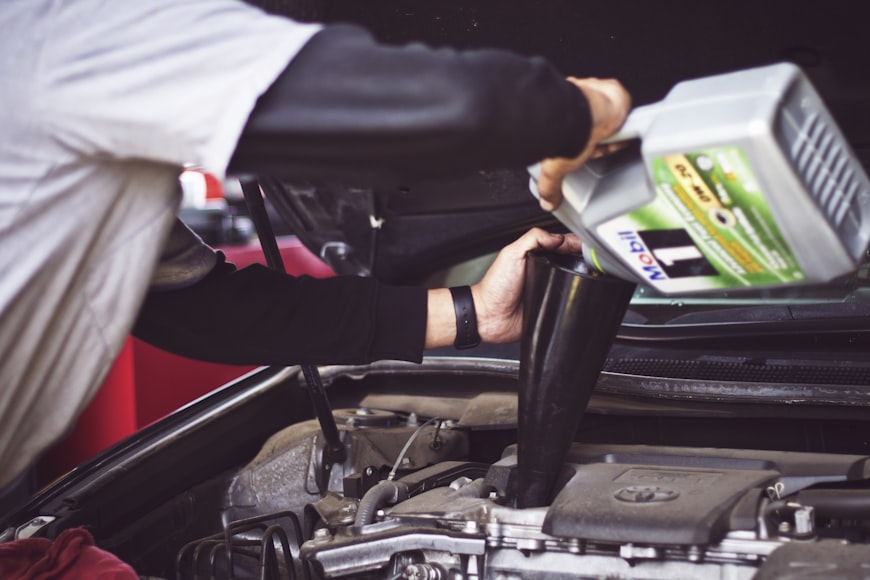Your car is one of your most important belongings, providing you with essential transportation and all the freedom that comes with it. While you’ll naturally have to invest time and money in your vehicle, it doesn’t have to be a money pit. With mindful car care and smart driving habits, you can cut your costs in numerous ways.
American Auto Insurance is here for all your needs, from providing affordable insurance coverage, including comprehensive and collision coverage, to keeping you in compliance with SR-22 regulations. We’re committed to helping you save money and stay on the road. Here are eight handy ways to do just that by reducing your fuel consumption while driving.
1. Keep Up With Routine Maintenance

Stay on top of all your vehicle’s recommended maintenance. Regular care helps ensure that everything runs as smoothly as possible so your vehicle doesn’t have to work harder than it should to deliver you to your destination. Tuning up a sorely neglected vehicle can improve fuel efficiency by 4% on average. Staying on top of oil changes and using the right motor oil can boost your fuel economy by another 2%. Look for oil with friction-reducing additives for the best results.
2. Clean Out the Car
Are you carting around a lot of unnecessary items in your car? Some people fall into the habit of using their vehicle as an extra storage closet for things such as sports equipment, gym gear, and camp chairs. Carrying around an extra 100 pounds can reduce your fuel efficiency by up to 1%. Keep the extras to a minimum in your vehicle so you’re not paying to give unused stuff a ride.
When you load up your car with items such as recycling or charity donations, hit those destinations as soon as you can and unload new purchases the moment you get home. Take care of trash immediately, and don’t let bags of fast-food wrappers or empty cups accumulate.
3. Remove Roof Racks
If you’re not actively using your roof racks, take them off. This is especially true of cumbersome bike racks and other specialty equipment. Not only do they add weight to your vehicle, as cautioned against above, but they also create aerodynamic drag. Sitting atop the car, they can reduce your fuel efficiency by as much as 20% when you’re cruising along the highway, and the wind has a chance to really grab ahold of them.
4. Check Your Tire Pressure Often
Check your tire pressure at least once a month. Don’t wait for your tire pressure monitoring system to let you know that your tires are underinflated. These systems won’t illuminate the tire pressure light until you’re 25% off of where you should be, but you’ll start losing efficiency long before that. Check the sticker inside your door for your vehicle’s recommended tire pressure and inflate the tires as needed. A tire that’s underinflated by just 8 pounds per square inch can increase fuel consumption by as much as 4%.
5. Use the Air Conditioner Right
There’s great debate over whether using your air conditioner or driving with the windows down is more fuel-efficient. The air conditioner can cut your fuel efficiency by as much as 25% when it’s extremely hot out. However, keeping the windows down can create troublesome aerodynamics that also reduce your fuel efficiency. The most economical approach is typically to keep the windows open at low speeds and run the air conditioning at highway speeds so you can enjoy the best of all worlds and minimize potential issues.
If you have an electric vehicle, you can pre-cool the cabin while it’s plugged in to help extend your range.
6. Drive at Steady, Moderate Speeds
Accelerating hard and braking fast can lower your fuel efficiency by as much as 40% in stop-and-go traffic. On the highway, similar behavior may reduce your fuel efficiency by 15 to 30%. Start and accelerate at moderate speeds and coast down hills as much as possible. Slow gradually when you approach red lights rather than speeding up and slamming on the brakes at the last moment.
Speeding along may feel like the most efficient way to travel, but higher speeds often equate to poorer fuel efficiency. The ideal speed for fuel consumption is 55 miles per hour. When this standard speed limit was in effect, Americans saved around 2.56 gallons of gas each year. Your efficiency drops 8% between 55 and 65 miles per hour. Driving at 80 instead of 55 lowers your efficiency by 28%. Stay close to the speed limit and use cruise control to maintain a steady speed that delivers optimal efficiency.
7. Avoid Rush Hour Driving
Rush hour presents many challenges when it comes to minimizing your fuel consumption. The roads are fraught with stop-and-go driving conditions, and you may find that quickly accelerating and braking is the only way to dart into a coveted opening in traffic to get to your exit. If at all possible, avoid driving in rush hour entirely. If you can’t avoid it, explore different routes. You may find that you get home quicker and save fuel with a longer route simply by avoiding the crush of cars on popular thoroughfares.
8. Don’t Let Your Vehicle Idle
Your vehicle may consume as much as a half-gallon of fuel in an hour just idling. On the other hand, it takes only 10 seconds’ worth of fuel to start a warm engine. If you plan to sit for more than three minutes, it’s well worth the fuel savings to simply park your vehicle and restart it when you’re ready to move. This trick can add up to noticeable savings if you idle daily in places such as the school pickup line.
Save Money on Your Vehicle’s Needs
When you’re looking to save money on your vehicle, American Auto Insurance is the company to turn to. We help thrifty Illinoisans affordably insure their vehicles and navigate the SR-22 process. We’re here to answer all your questions. Just give us a call now.
man refilling motor oil on car engine bay by Tim Mossholder is licensed with Unsplash License


